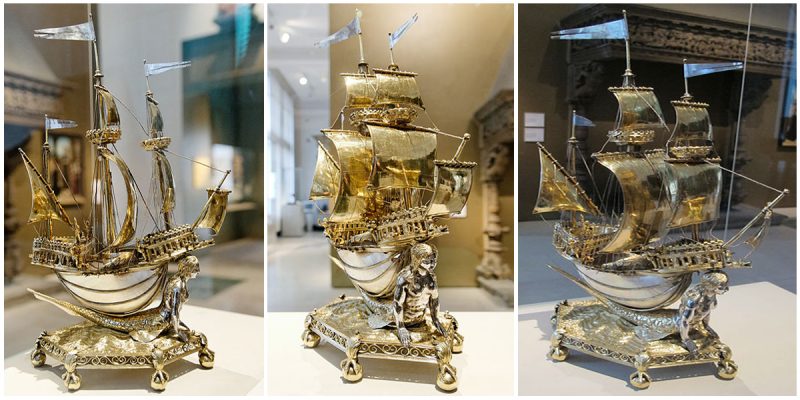The nef (old French for “ship“) was an important element of the medieval table setting.
It was a boat shaped container that was set on the table and was used to hold cutlery, napkins, and sometimes spices, intended for the dining tables and buffets of the wealthy.
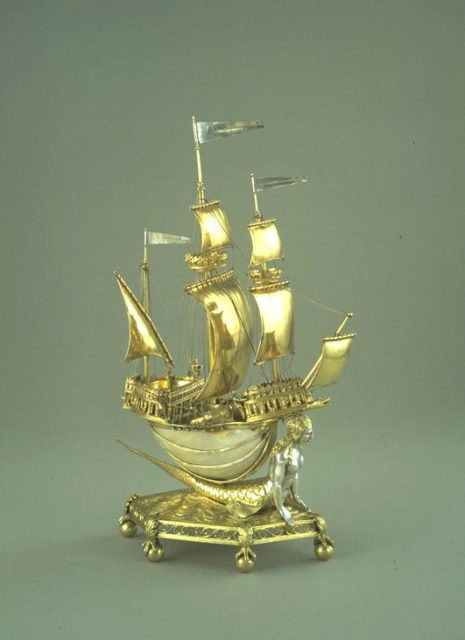
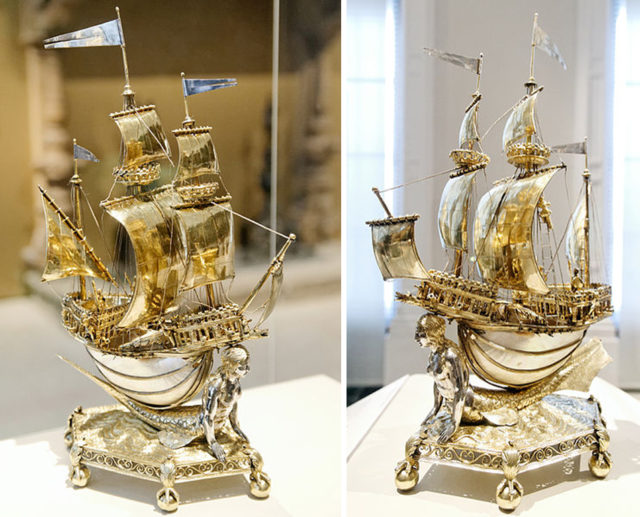
It was discovered in 1956 by the silver specialist Arthur Grimwade in the basement of Burghley House near Stamford, and it was sold on 17th July 1959 when the 6th Marquess of Exeter auctioned part of his silver collection.
The same year it was purchased by the V&A with the assistance of the Worshipful Company of Goldsmiths and the National Art Collections Fund.
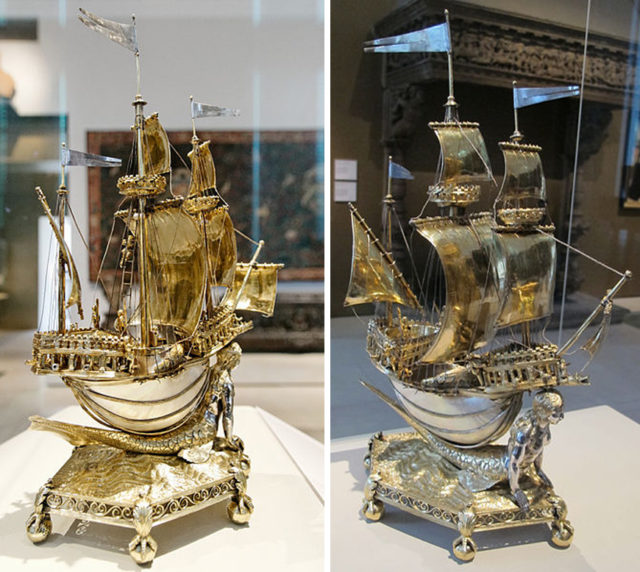
The date and origin of this exquisite craftsmanship remain unknown. Some scholars believe the nef was made in Paris by Pierre le Flamand in 1482-3, but others believe it to be as late as 1527-28, because of its stylistic similarities to the French Renaissance silver of the 1530s.
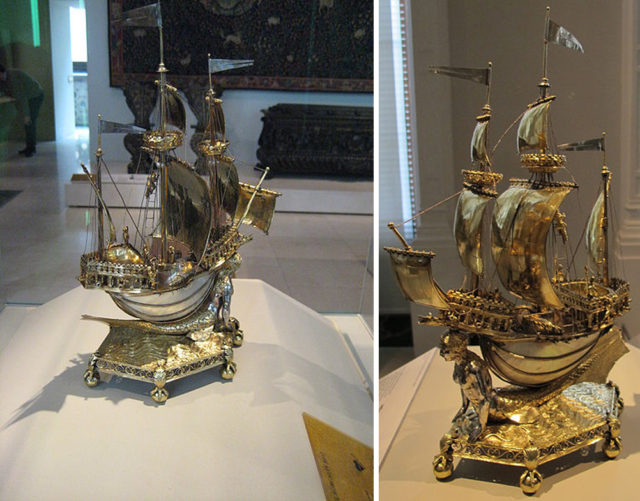
A nautilus shell forms the hull of the vessel, which rests on the back of a mermaid reclining on a hexagonal base of rippling waves with six ball-and-claw feet.
At the foot of the mast are the tiny figures of the lovers Tristan and Iseult on their fateful journey from Ireland to Cornwall, playing chess. It would have been placed in front of the most important person at the table as a mark of their status.
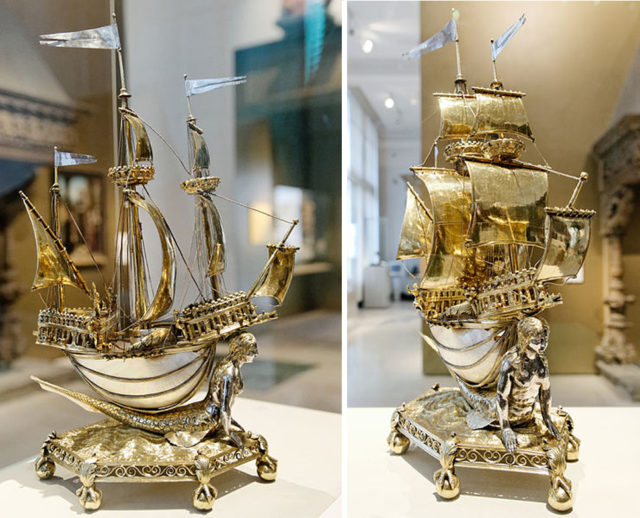
This 16th-century salt cellar continued a fashion that is documented as early as the 13th century. The use of the ship form is believed to symbolize “good fortune and fair sailing on the uncertain seas of Life.
” It is currently in the collection of the Victoria and Albert Museum in London.
